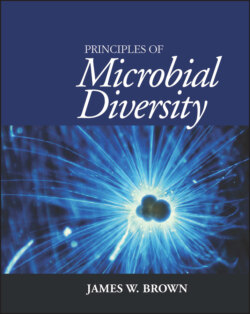Читать книгу Principles of Microbial Diversity - James W. Brown - Страница 60
Molecular phylogenetic trees depict the relationships between gene sequences
ОглавлениеThe final step in the tree-building process is the leap of faith that the tree depicting the relationships between the sequence similarities in an alignment also depicts the evolutionary history of the organisms from which the sequences were derived. You can go wrong for many reasons at this step.
The most common reason is the choice of sequence for use in the analysis, the first step of the whole process. What would happen if, for example, you made a tree of mammals by using globin genes, but used alpha globin sequences from some species and beta globin genes from others? What might happen if, in an analysis of plants, you used nuclear SSU rRNA sequences from some plants, chloroplast SSU rRNAs from others, and mitochondrial sequences from still others? What if, in an analysis of bacterial species, you used a gene like amp, encoding penicillin resistance, which clearly moves readily from species to species? The trees you would build with these sequences might be perfectly valid, accurately representing the relationships between the genes used, but they would not represent the relationships between the organisms.
So, if a tree just fundamentally does not look right, check the alignment first and then the quality of the sequences, but then think about the sequences used and how a tree of these sequences might not reflect the relationships between the organisms.
PROBLEMS
1 1. Construct a similarity matrix from this alignment:
2 2. Given the Jukes and Cantor conversion graph in Fig. 4.1, convert the similarity matrix from question 1 to a distance matrix.
3 3. Given this distance matrix, draw a tree relating these sequences and label the lengths of the branches of the tree:
4 4. Given this distance matrix, draw the structure of a tree relating the sequences using the neighbor-joining method, and label the lengths of the branches:
5 5. Generate a tree from this alignment using the neighbor-joining method, with approximate branch lengths.
